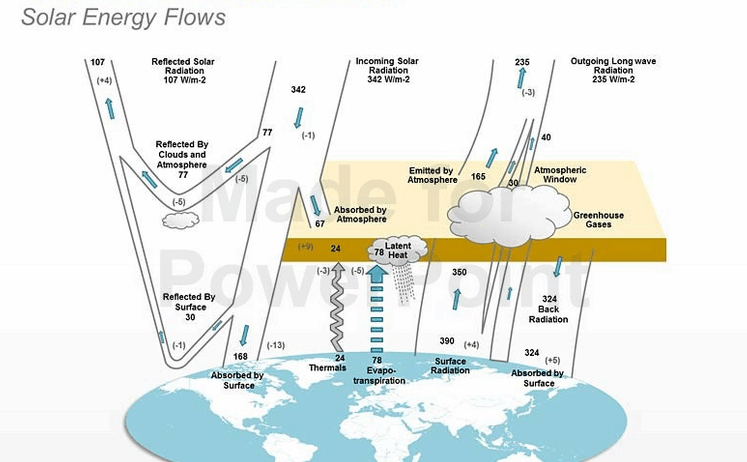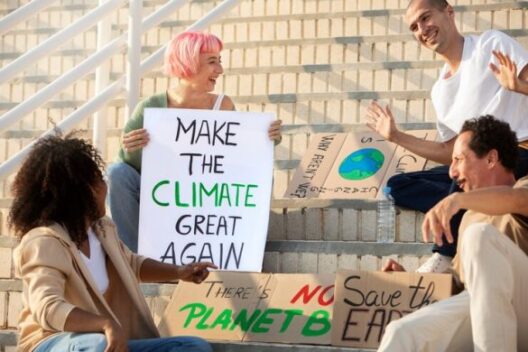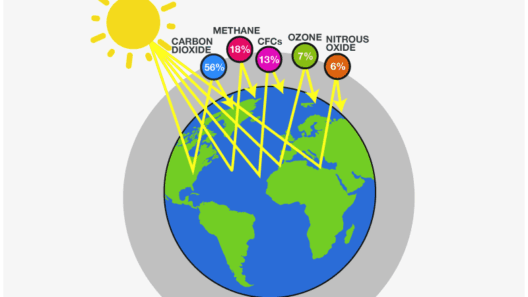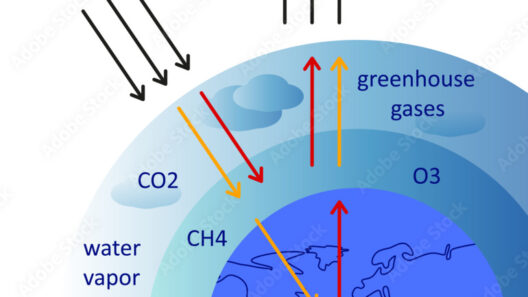The Greenhouse Effect is a phenomenon that generates intrigue and debate. While it serves as a cornerstone for understanding climate change, misconceptions abound. Not all statements regarding the Greenhouse Effect are accurate. In this article, we will elucidate which statements about this pivotal environmental process are untrue, debunking myths and meticulously examining factual clarity around the greenhouse phenomenon. Our aim is to foster a more profound understanding while prompting a transformative shift in perception.
To embark on this intellectual journey, we must first establish a foundational comprehension of the Greenhouse Effect itself.
What Constitutes the Greenhouse Effect?
The Greenhouse Effect essentially refers to the natural process by which certain gases in the Earth’s atmosphere trap heat, preventing it from escaping into space. This retention of heat is vital, as it allows our planet to maintain a hospitable temperature for life as we know it. The primary greenhouse gases include carbon dioxide (CO2), methane (CH4), nitrous oxide (N2O), and water vapor, among others. When the sun’s rays penetrate the atmosphere and warm the Earth’s surface, some of this energy is radiated back into space. However, greenhouse gases absorb and re-emit this thermal radiation, thereby keeping the planet warmer than it would be without them. While this process is essential for sustaining life, human activities have intensified the concentration of these gases, exacerbating climate change through an enhanced greenhouse effect.
Exposing Misconceptions: Where Does the Confusion Lie?
It is crucial to disentangle fact from fiction regarding the Greenhouse Effect. Common misconceptions can lead to a misunderstanding of its significance in climate dynamics. Here, we shall scrutinize three prevalent statements that are, in fact, inaccurate.
The Illusion of a Homogeneous Impact
A frequently perpetuated myth is that the Greenhouse Effect impacts all regions of the Earth uniformly. This statement is not true. The reality is that the effects of greenhouse gas emissions vary drastically depending on geographical regions, local climates, and atmospheric conditions. For example, polar regions are experiencing warming at a rate nearly twice that of the global average, a phenomenon termed Arctic amplification. On the other hand, areas less susceptible to temperature fluctuations, such as the tropics, may perceive the effects differently. Thus, the uneven distribution of climate impacts complicates the narrative surrounding the Greenhouse Effect.
The False Dichotomy of Natural vs. Anthropogenic
Another misleading assertion is that the Greenhouse Effect is a wholly natural phenomenon, unaffected by human interventions. This is patently false. While the Greenhouse Effect is indeed a natural occurrence, the extent to which human activities have exacerbated this process is unprecedented. Activities such as burning fossil fuels, deforestation, and industrial emissions have led to significant increases in greenhouse gases. This anthropogenic influence has altered climate patterns, contributing to extreme weather events, rising sea levels, and numerous ecological disruptions. Therefore, understanding the dual nature of the Greenhouse Effect—both natural and anthropogenic—is imperative to addressing climate change effectively.
Myth of a Static Climate System
The notion that our climate system operates in a static manner is another common misconception. Some people believe that the effects of the Greenhouse Effect can be reversed simply by reducing emissions. While mitigation is essential, climate systems are inherently dynamic, characterized by feedback loops that amplify or mitigate changes. For instance, as temperatures rise due to increased greenhouse gas concentrations, polar ice melts, leading to reduced albedo (reflection of sunlight). This, in turn, accelerates warming. Therefore, the relationship between greenhouse gases and temperature is complex, marked by intricate interactions that make any simplistic view of reversal misleading.
Bridging the Gap: How We Can Reconcile Myths with Reality
To foster a clearer understanding of the Greenhouse Effect, it is essential to embrace a more sophisticated perspective. Knowledge and education can dismantle myths, and thus, we must engage in informed discourse surrounding climate science. Promoting scientific literacy is vital; individuals should be encouraged to seek resources, participate in discussions, and share findings with their communities. Moreover, advocacy for sustainable practices—such as transitioning to renewable energy sources and enforcing regulations that limit emissions—should be amplified.
Unearthing Solutions: Collective Responsibility
Conversely, shifting our mindset about the Greenhouse Effect extends beyond just understanding it—collective responsibility plays an undisputed role. Governments, corporations, and individuals must enact sustainable policies and practices that mitigate the adverse effects of greenhouse gases. Promoting ecological consciousness within communities, implementing carbon management strategies, and supporting innovations in technology can help address the contemporary climate crisis.
In Conclusion: Embracing Knowledge for Action
In summary, while the Greenhouse Effect is a natural occurrence essential for life on Earth, misconceptions surrounding it can hinder meaningful dialogue and progressive action against climate change. By identifying and debunking these myths, we can cultivate a more accurate understanding of how to address the multifaceted challenges posed by this phenomenon. As awareness grows, so does the potential for meaningful change—a shift in perspective that can invigorate global efforts toward sustainability.







